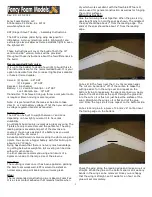
Pilot Operating Handbook
Cavalon
SECTION 7
SYSTEM DESCRIPTION
AutoGyro_POH_Cavalon 915iS
Revision 1.0 – Issue Date 08.MAY.2019
7-23
7.18 Pitot Static
Total pressure is picked up by a pitot tube located in the nose section of the fuselage. The
tube is connected to the integrated cockpit instruments by a plastic line. The static pressure
is measured across two ports, one on either side of the fuselage. For aircraft equipped for
Night-VFR an alternate static port is provided by an open vent behind the instrument panel
and selection of primary/alternate static source made by a toggle switch on the instrument
panel.
Aircraft equipped for Night-VFR also have a heated pitot-tube (optional).
7.19 Indicators and Sensors
Rotor speed is measured by a magnetic pick-up, located directly at the geared ring of the
rotor head.
Comparison of rotor RPM with engine RPM governs the CLUTCH indication that informs the
pilot about a slipping clutch (continuous light) or warns of an attempted take-off run with the
risk of blade flapping (blinking).
CLUTCH is on with engine speeds above 2200 RPM and rotor speed
not matching while pre-rotator is depressed (slipping clutch)
CLUTCH is blinking with engine speeds above 5000 RPM and rotor speed
below 200 RPM (attempted take-off run with the risk of blade flapping)
NOTE
If the stick is pulled back more than 5degrees the pre rotator clutch will
automatically disengage. In this case the CLUTCH lamp will indicate a
continuous light until the pre rotator button is released.
Outside air temperature (OAT) is measured by a thermocouple located at the fuselage belly
above the nose wheel.
Other indicators and sensors have been described in the respective paragraphs. For engine
related indicators and sensors see the engine manufacturer’s manual.
7.20 Seats and Seatbelts
The seats consist of seating surface as an integral part of the monocoque structure and
adjustable backrest, upholstered with removable cushions. The cushions consist of a foam
core covered with an easily cleanable, water-repellent fabric.
The backrest hinges are positioned by 2 countersunk Allen bolts on two seating rails. To
suit to different leg lengths the backrest hinges can be adjusted by removing the Allen bolts
and refitting in a different position on the rails. Ensure the screws are properly tightened
after adjustment! In addition the backrest angle can be adjusted by modifying the lengths of
the telescopic tubes.
An adjustable four point harness is provided for each seat. Make sure that the seat belt is
buckled and tight when flying with the left hand seat unoccupied.
















































